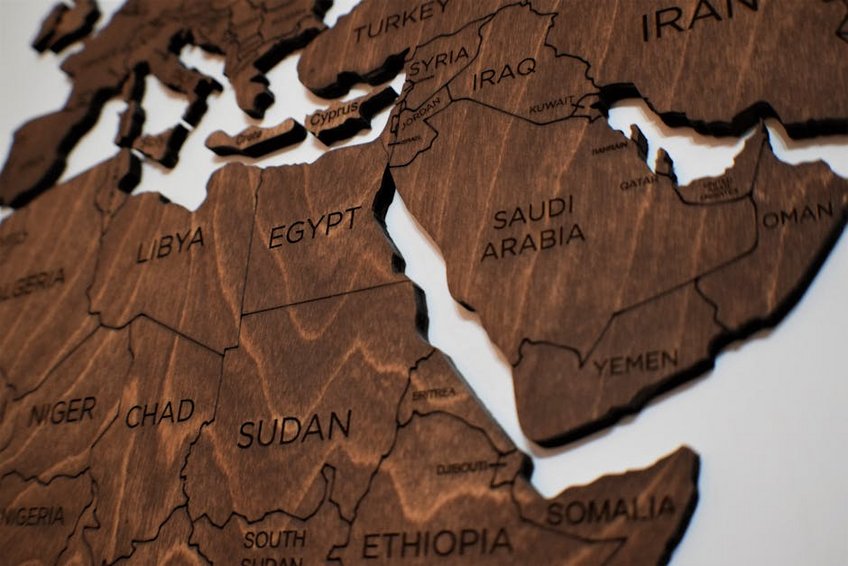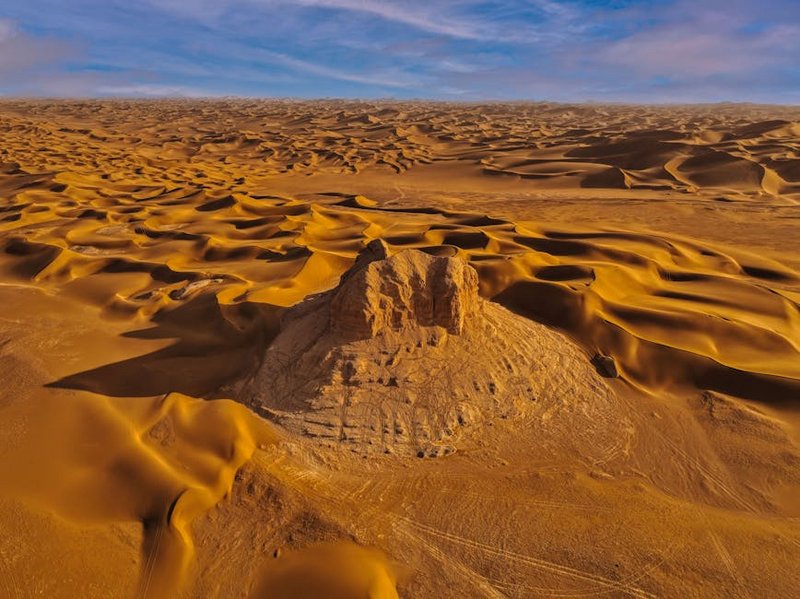Libya Leptis Magna Roman Ruins: Ancient Splendor in North Africa
Exploring the Libya Leptis Magna Roman ruins immerses you in one of the Roman Empire’s best-preserved archaeological sites along the Mediterranean coast. This ancient city showcases monumental arches, intricate mosaics, and sprawling forums that reveal centuries of history from its Phoenician origins through Roman zenith. Your guide covers essential travel logistics, seasonal timing, and cultural insights for safely experiencing these remarkable North African treasures.
Essential Historical Background
Leptis Magna flourished as a major trading hub under Roman Emperor Septimius Severus, who expanded its grandeur during his reign. The city’s architecture blends Phoenician craftsmanship with Roman engineering across temples, baths, and theaters constructed between 100-300 AD. UNESCO designated the site a World Heritage location in 1982, recognizing its exceptional preservation amidst coastal dunes.
Archaeological excavations continue revealing hidden chambers and artifacts beneath the sandy terrain. Modern conservation efforts focus on stabilizing structures against Mediterranean erosion and documenting fragile mosaics. International teams work alongside Libyan authorities to protect this cultural treasure for future generations of historians and travelers.
Key Historical Periods
Understanding the timeline enhances your visit significantly.
- Phoenician Era (1000-146 BC): Founded as Lepcis trading post specializing in olive oil, grains, and wild animals exported across Mediterranean routes.
- Roman Provincial Period (146 BC-193 AD): Incorporated into Roman Africa province, constructing basilicas, forums, and the original harbor under Augustus and Trajan.
- Severan Dynasty (193-235 AD): Native son Septimius Severus transformed the city with colossal structures like the tetrapylon arch and expanded harbor facilities.
- Budget Traveler: $150-200 daily covers basic hotels, group tours, local meals, and shared transportation from Tripoli, requiring advance booking during stable periods.
- Mid-Range Explorer: $200-250 daily includes comfortable hotels, private guided tours, better meals, and air-conditioned vehicles with experienced drivers knowledgeable about regional history.
- Luxury Experience: $250-300+ daily provides premium hotels, specialized archaeological guides, fine dining, and customized itineraries with extended site access permissions.
- UNESCO World Heritage Centre – Archaeological Site of Leptis Magna
- Lonely Planet Libya Travel Information
Architectural Highlights Overview
The Severan Basilica features towering Corinthian columns and intricate reliefs depicting mythological scenes from the Labors of Hercules. Meanwhile, the Hadrianic Baths complex spans over two hectares with separate caldarium, tepidarium, and frigidarium sections for social bathing rituals. These structures demonstrate advanced Roman engineering adapted to North African climate conditions through sophisticated water systems.
Cultural Significance Today
Local Bedouin communities maintain oral histories about the ruins, passed through generations alongside traditional land stewardship practices. Modern Libyan cultural festivals occasionally host events at the site, blending ancient heritage with contemporary artistic expressions. Your visit contributes to preservation efforts when booking authorized guides and respecting designated pathways.

Alt: “leptis-magna-roman-archaeological-site-mediterranean-coast”
Libya Leptis Magna Roman Ruins – Planning Your Trip
Organizing your Libya Leptis Magna Roman ruins adventure requires careful timing between October-April when daytime temperatures range 65-80°F (18-27°C). Secure visas through Libyan embassies months ahead, arranging guided tours via registered operators for site access permissions. Budget $150-300 daily covering accommodations, transportation, meals, and mandatory guide services throughout your exploration.
Pack lightweight cotton clothing, sturdy walking shoes, sun protection, and portable water filters for desert conditions. Download offline maps and Arabic translation apps since English signage remains limited around excavation zones. Confirm travel insurance covers political evacuation given fluctuating regional stability concerns affecting tourism infrastructure.
Best Time to Visit Leptis Magna
Peak visiting months run November-March with comfortable 68-75°F (20-24°C) days ideal for extensive site walking without extreme heat exhaustion risks. These drier months provide clear photography conditions morning and afternoon, though winter occasionally brings brief rainfall. Shoulder seasons October and April offer 75-85°F (24-29°C) temperatures with fewer visitor groups but potential sandstorm days.
Summer months May-September reach hazardous 100-115°F (38-46°C) temperatures, restricting site access to early mornings only. Many tour operators suspend services during peak heat, while accommodation availability decreases significantly. Plan your ancient Roman exploration during cooler periods for comprehensive architectural appreciation.
Budget Planning and Costs
Daily expenses vary considerably based on accommodation style and tour inclusions.
Essential Preparation Checklist
Required documentation includes valid passport, Libyan visa, international driving permit if self-driving, and comprehensive travel insurance with political evacuation coverage. Photocopy all documents storing separately from originals while registering with your embassy upon arrival. Download visa application forms from Libyan diplomatic missions website before departure.
Packing essentials involve moisture-wicking clothing, broken-in hiking shoes, wide-brimmed hat, high-SPF sunscreen, and electrolyte supplements for hydration. Bring power banks, universal adapters, and satellite communicators since cellular service remains unreliable outside urban centers. Familiarize yourself with basic Arabic phrases for greetings and directions.
Top Archaeological Attractions
Leptis Magna’s monumental architecture spans approximately 120 acres, requiring multiple days for thorough exploration of its major complexes and hidden details. The Severan Forum complex alone covers nearly two hectares with elaborate marble revetments and statuary fragments scattered throughout the paved expanse. Wear comfortable footwear and carry water while navigating uneven ancient pathways between structures.
Hire knowledgeable guides from authorized agencies to decode architectural features and historical contexts often missed by independent visitors. Morning light optimally illuminates the theater’s stage background while afternoon sun enhances the harbor area’s column details. Allocate time for resting in shaded areas during peak daylight hours.
Must-See Highlights
The Roman Theater boasts exceptional acoustics and cavea seating overlooking the Mediterranean, constructed during Augustus’ reign and expanded under Septimius Severus. Meanwhile, the Hunting Baths feature vivid frescoes depicting animal combats and rural scenes preserved remarkably within their vaulted chambers. Entry fees typically range $10-20 included in tour packages.
Septimius Severus Basilica showcases towering 15-meter columns and intricate Proconnesian marble panels illustrating mythological narratives across its aisles. The adjacent Forum houses temple remains and commercial basilica where merchants conducted Mediterranean trade. Visit these complexes early morning to avoid midday visitor crowds and heat accumulation.
Hidden Gems and Local Favorites
The Nymphaeum monument’s partially reconstructed fountain structure reveals sophisticated hydraulic engineering through its aqueduct-fed water displays. Local guides often point visitors toward lesser-known mosaic floors in residential villas depicting agricultural scenes and maritime themes. These artifacts demonstrate daily life beyond ceremonial architecture.
Explore the underground cistern system accessing stored rainwater through narrow passageways rarely included standard tours. The museum near the entrance houses smaller artifacts like pottery, coins, and inscriptions providing cultural context. Engage caretakers for stories about recent discoveries during preservation work.
Guided Tours and Specialized Experiences
Authorized archaeological tours detail construction techniques and historical significance across different imperial periods represented onsite. Specialized photography workshops focus on optimal lighting conditions for capturing architectural details and panoramic views. These experiences typically cost $50-100 extra beyond standard guided visit fees.
Full-day itineraries incorporate nearby sites like Sabratha’s theater and Tripoli’s Red Castle Museum for comprehensive historical perspective. Multi-day packages include transportation, accommodations, and specialized access permissions. Verify guide certifications and operator licenses before booking any specialized Roman ruins experiences.
Practical Travel Logistics
Most international visitors fly into Tripoli’s Mitiga International Airport (MJI), then arrange overland transport to Leptis Magna approximately 130 kilometers east along coastal highways. Secure pre-booked drivers through reputable agencies since public transportation remains unreliable for archaeological site access. Road conditions vary significantly outside urban centers.
Accommodation options cluster in Tripoli with few quality hotels near the ruins themselves, requiring daily commuting. Modern hotels offer Western amenities while traditional guesthouses provide cultural immersion opportunities. Book months ahead during peak seasons since quality lodging availability remains limited throughout Libya.
| Accommodation Type | Features and Location | Price Range (USD) |
|---|---|---|
| Budget Hotels | Basic amenities, shared bathrooms, central Tripoli locations, breakfast included | $50-80 nightly |
| Mid-Range Hotels | Private bathrooms, air conditioning, restaurant onsite, airport transfers available | $80-150 nightly |
| Business Hotels | Swimming pools, fitness centers, multiple dining options, conference facilities | $150-250 nightly |
| Luxury Properties | Beach access, spa services, executive suites, private guided tours arranged | $250-400+ nightly |


